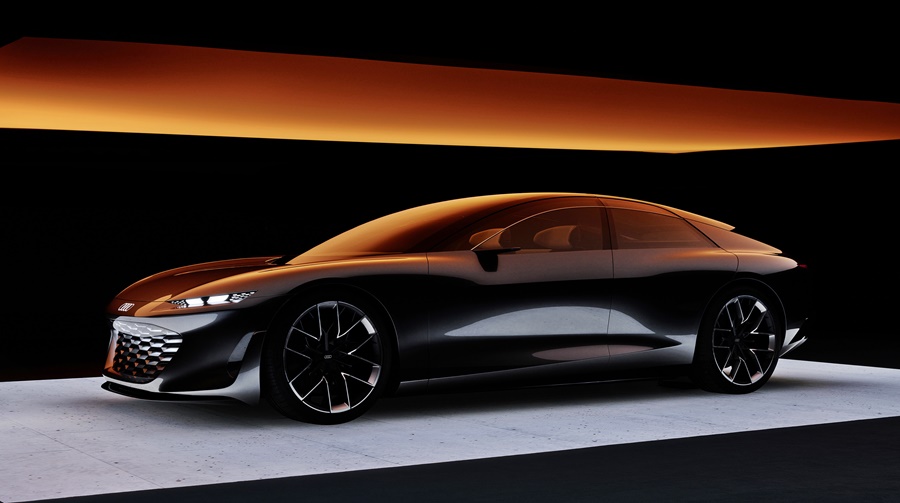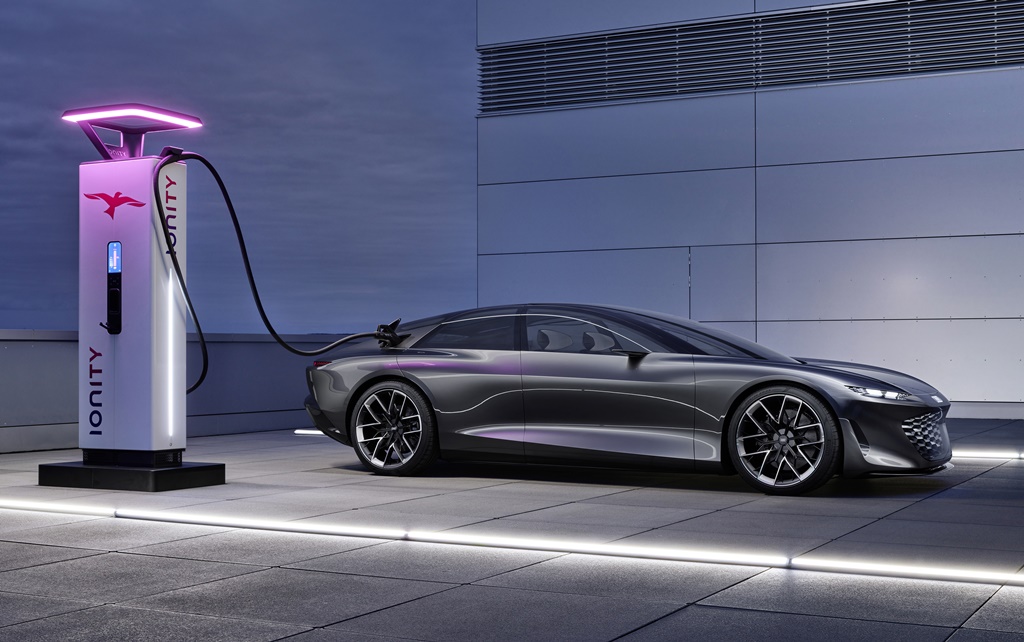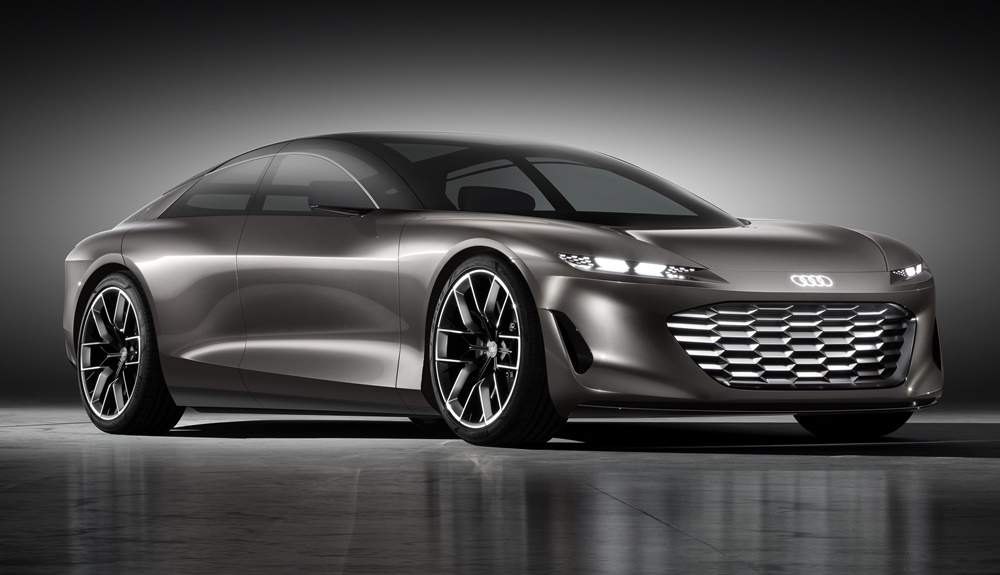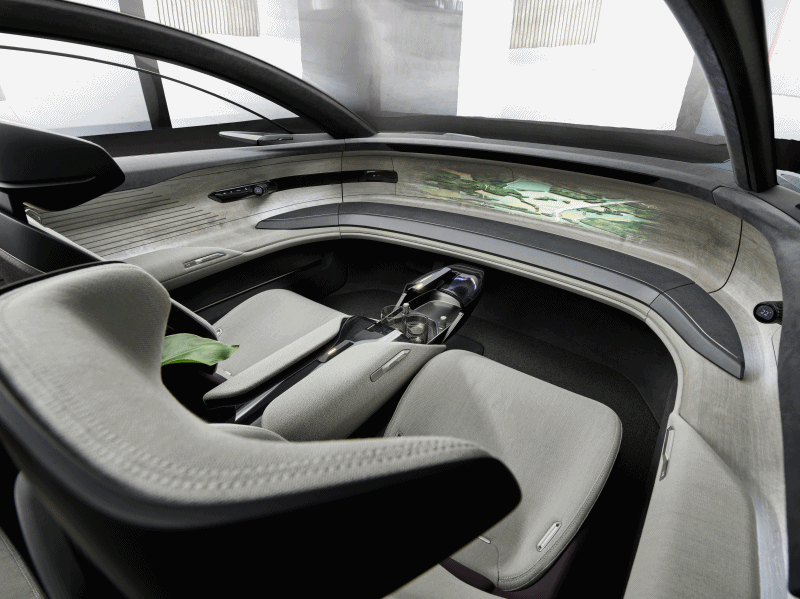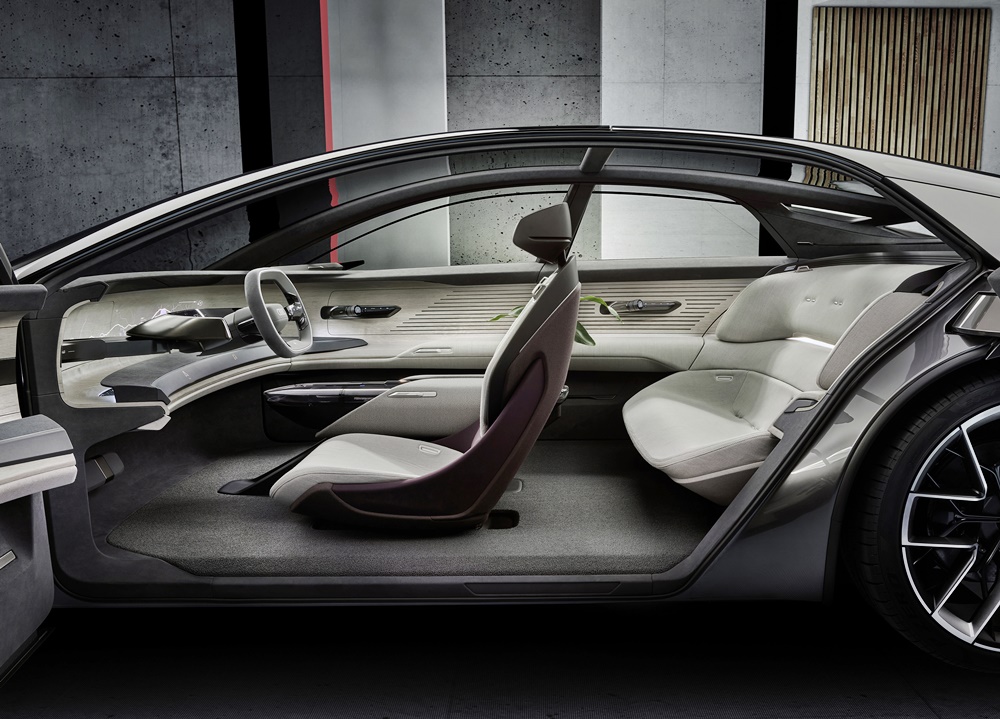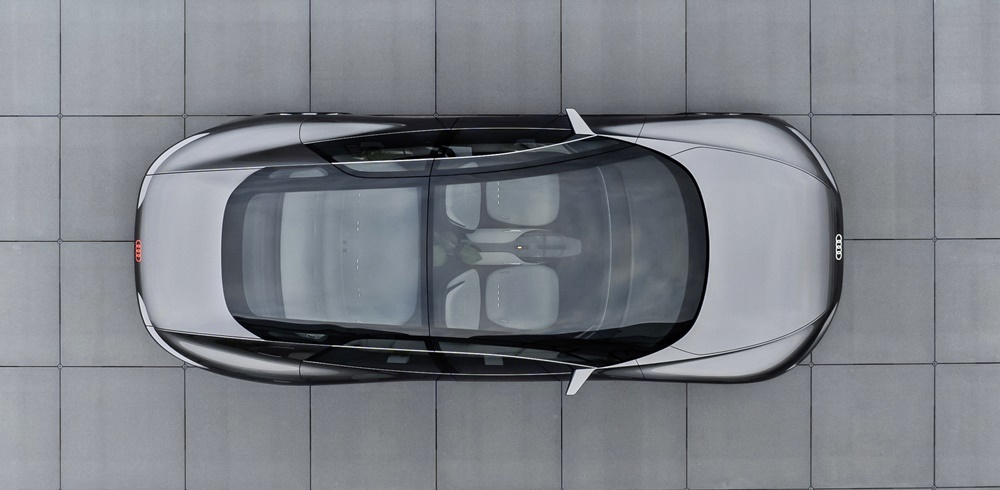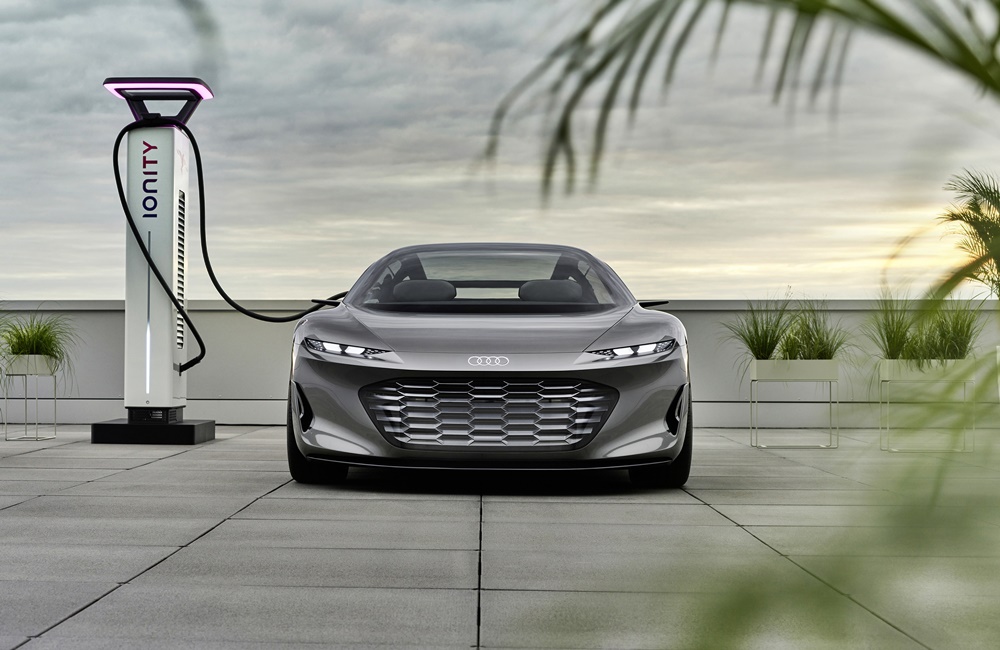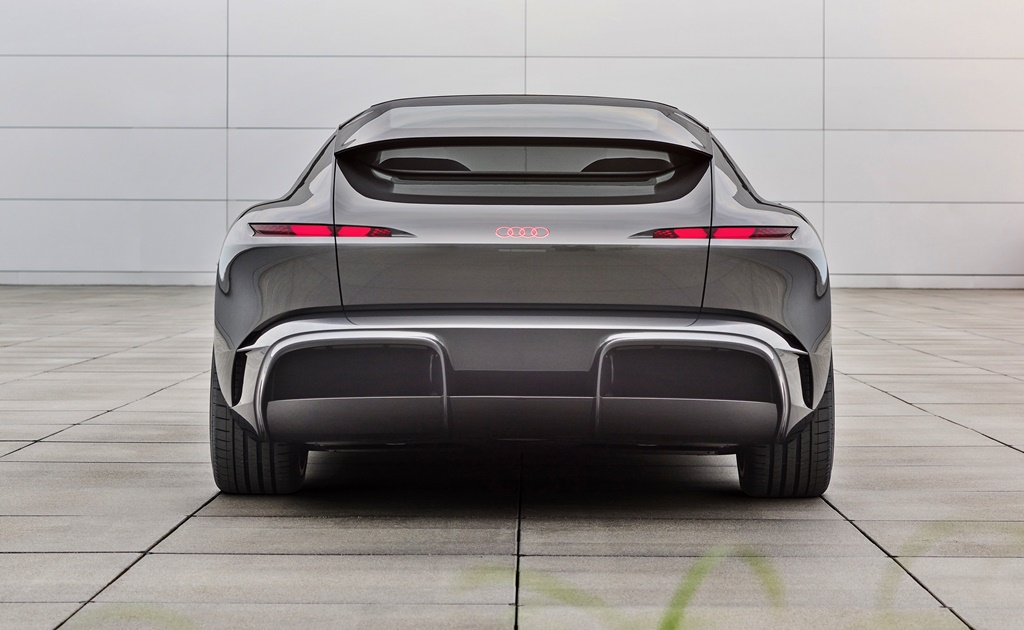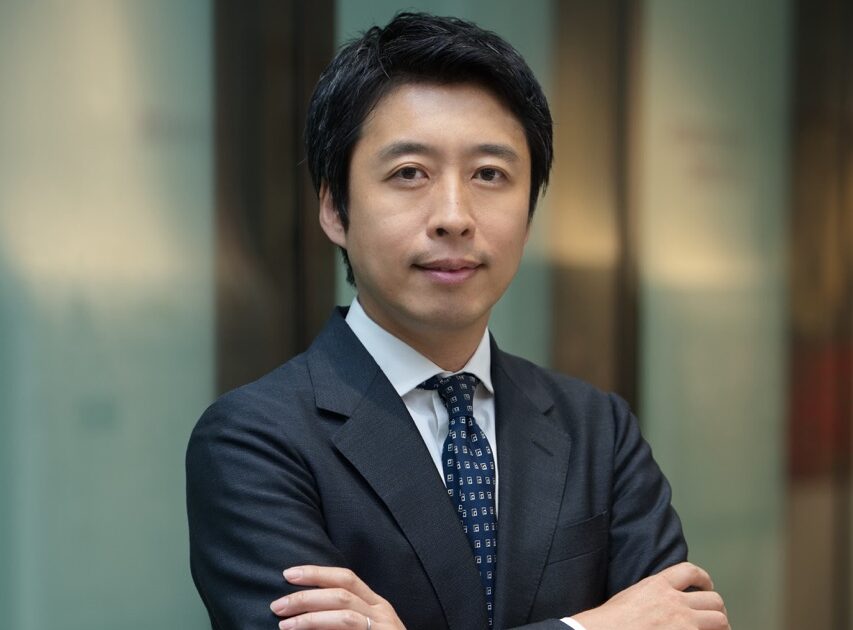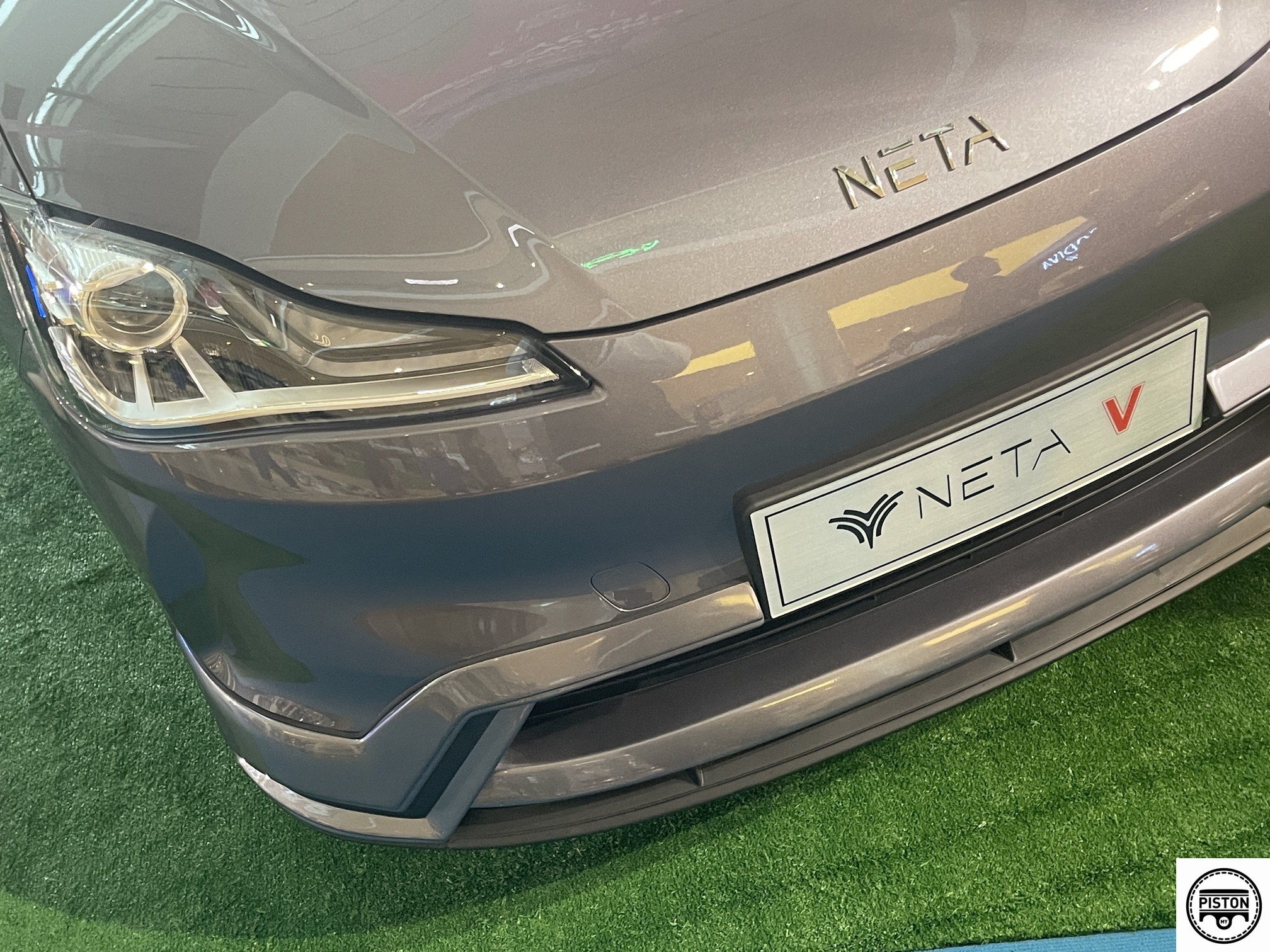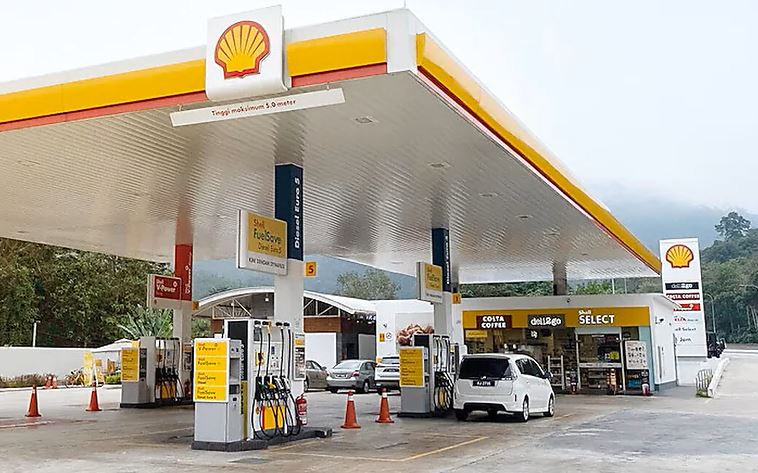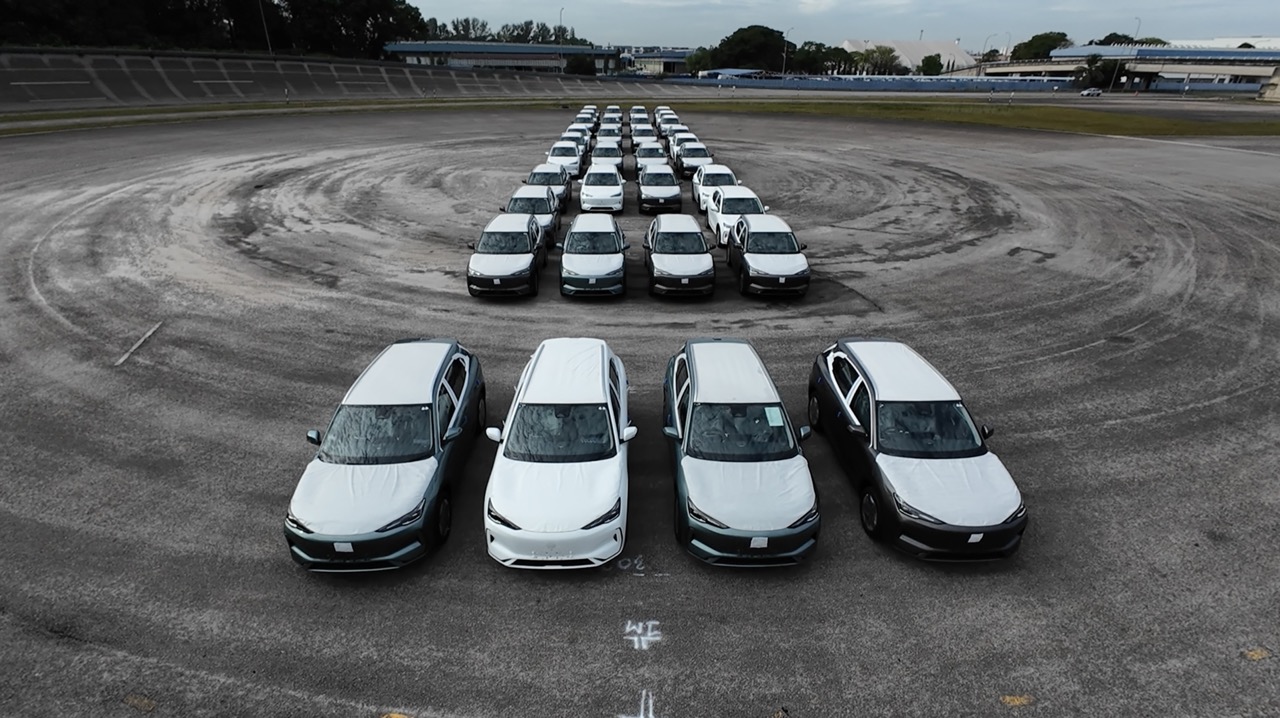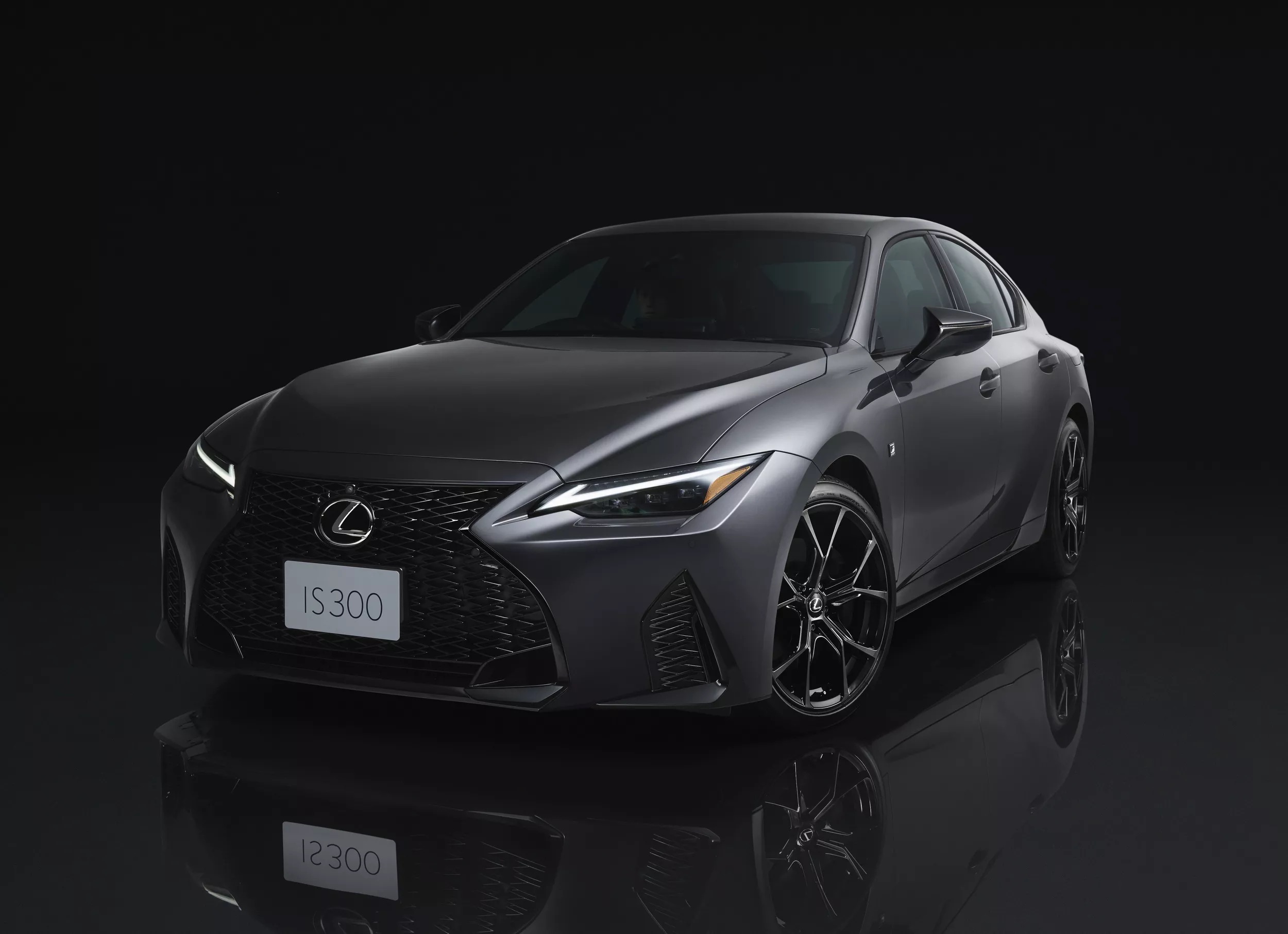Audi calls it ‘the private jet for the road’, offering the sort of suite you would find in First Class in an Airbus A380. Called the grandsphere, it’s the second of three ‘sphere’ concept cars from the brand, following the skysphere concept unveiled last month in California. The shared root word ‘sphere’ in their names emphasizes all three designs’ focus on the new interior concept and the holistic digital ecosystem for a new world of experience on board.
Prioritising the cabin in design
In fact, the drive system and the handling are no longer at the top of the design specifications in this future generation of cars. Instead, the starting point is the interior, the occupants’ living and experience sphere while traveling. Their needs and desires shape the space, the architecture, and the functions.
With that reassessment, the design process itself changes. At the beginning of all discussions, the focus is directed toward the interior and its design. Only after that do the Audi designers conceive the package, exterior lines, and proportions that shape the car into a total work of art, along with the technological premises.
Preview of a future luxury model
The grandsphere concept is presented as a luxury car of the future and Audi confirms that the technologies and design features in it will appear within a few years in future models. Among the technologies will be Level 4 autonomy, which means the car will be able to operate on its own without human control. Audi is working with CARIAD, the Volkswagen Group’s software think-tank, toward introducing that technology in the second half of the decade.
Having autonomous capability for the car allows the interior space of the traditional driver-oriented cockpit and passenger seats to be changed into a spacious lounge as soon as the steering wheel and pedals are reduced. At the same time, it opens up new levels of freedom in interaction, whether they want to communicate, work or just be on their own. Audi believes this transforms a traditional automobile into an ‘experience device’.
Thanks to Audi’s own services and the ability to integrate digital services, the possibilities are nearly endless. These can be used to access a variety of service options related to the current trip – such as designing a spectacular scenic route, as well as restaurant or hotel options. The vehicle also takes care of everyday tasks that go beyond the journey itself. For example, the grandsphere concept can pick up its passengers with information about their current destination and independently handle parking and charging.
The doors of the grandsphere concept are reversed so front and back touch and there is no B-pillar in the middle. Even before arriving at the car, the passengers are provided with a pathway identification that opens the doors and welcomes them with individually staged displays and ambient light. The driver and passenger positions are automatically detected and an array of personal comfort features – such as the climate control settings and the seats – are adjusted for the individual seats.
At the same time, the infotainment system accesses the passengers’ most recently used services and seamlessly resumes them inside the car. For instance, a video that a passenger was streaming on a tablet is automatically played back over the display surface. On the driver’s side, the projection surface automatically picks up on displaying the news the occupant was reading before getting in.
Unique space for four
The open, broad interior supports the impression of a unique space and the lack of a steering wheel, pedals, or conventional dashboard create a feeling of openness and breadth. The lines on the decorative surfaces and functional elements are emphatically horizontal. The large glass surfaces, expansive windscreen and transparent ceiling also emphasize the open feeling, along with the specific geometry of the side windows where the widest part is just slightly above eye level. It is a trick that Audi demonstrated for the first time in 2017 with its AI:CON concept car.
The 2+2 interior appears particularly wide when the two individual front seats are pushed all the way back. An upholstered, 2-person bench with an armrest that goes around the side is integrated as a seating option in the back, while both front seats are designed for first class comfort and space.
Outlets for air that is filtered and temperature controlled – even scented, if desired – as well as speakers that are inaudible to other passengers and allow for a private aural zone are all integrated. Between the front seats – normally concealed under metallic trim – there is a compact, onboard cooler with two glasses and a designed, elegant bottle for soft drinks.
No screens, no displays unless wanted
One surprise when looking around in the ‘reduced-design’ interior is the absence of instruments nor black screens for virtual display concepts are visible before activating the driving functions. This is a contrast to many visions of future vehicles which have screens to provide information and entertainment. However, the displays are still present; with the touch of a fingertip, they appear in the form of projections on the wooden surfaces under the windscreen.
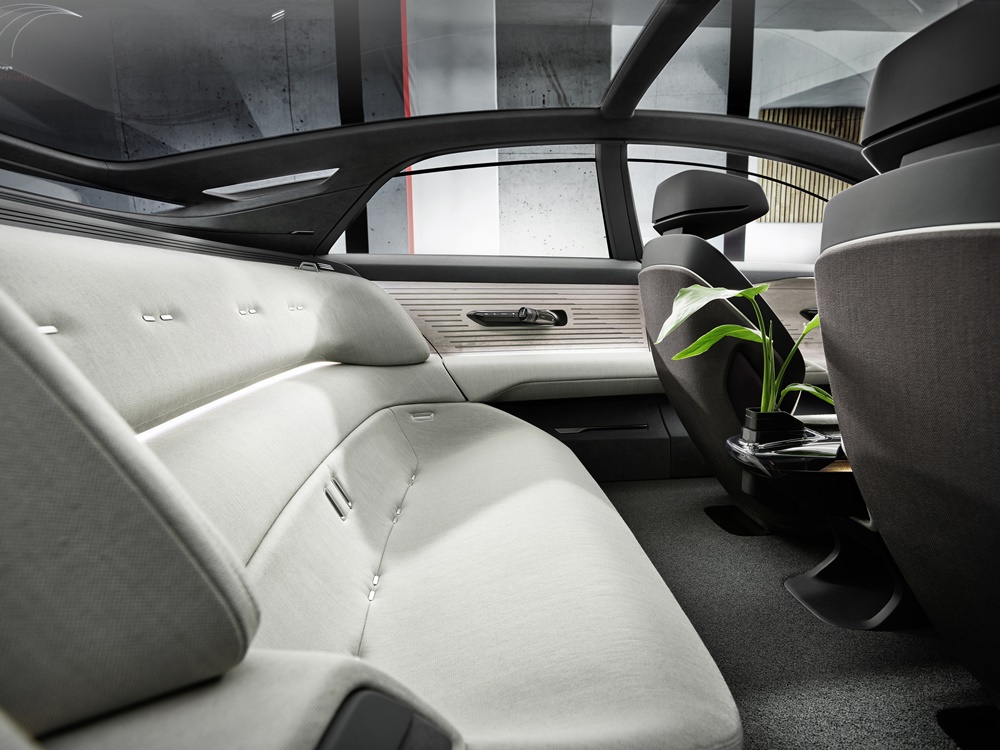
Alternatively, the projection surfaces can also be used – in automated driving mode – as CinemaScope screens for infotainment content or even as screens for video conferences. In addition, a sensor bar is integrated under the projection surfaces for quick switching between content such as music or navigation.
Control panels are also integrated into the armrests on the doors. That way, the car always offers passengers invisible touch surfaces using an optic indicator to show their position. At the same time, there are VR glasses in the armrests on the left and right doors that can be used in conjunction with infotainment options.
Dynamic monolith
At 5.35 metres long, 2 metres wide, and 1.39 metres high, the grandsphere concept’s measurements are comparable to Audi’s flagship A8. However, it has a longer wheelbase of 3.19 metres, which is even longer than the extended version of the current A8. Its form is nothing like a traditional sedan, but rather more like 4-door GT born in the wind tunnel.
In the front end, there is an innovative interpretation of the Singleframe that defines Audi’s look. Shaped like a flat hexagon, the interior surfaces, behind a transparent covering, are indirectly lit from above while driving to give a distinctive, extremely 3-dimensionally structured visual effect.
The headlight units on the upper side of the Singleframe look narrow, like focused eyes. The lighting units reference the four rings brand logo: they enlarge and isolate the intersection of two rings into a pupil – a new, unmistakable digital light signature. This means that the size of the light areas can be adjusted according to their function as daytime running lights or as dynamically staged blinkers, depending on the traffic situation.
Drive system with quattro, of course
The technology platform of the grandsphere is what is known as the Premium Platform Electric, or PPE. It has been conceived exclusively for battery-powered electric drive systems, with the key element being a battery module between the axles that holds around 120 kWh of energy. A flat battery layout is possible with the entire base between the axles.
Being an Audi, the grandsphere would also have a quattro drive system, in this case a fully electric one. This is achieved by having separate electric motors mounted on the front and rear axles that use electronic coordination to deliver all-wheel drive on demand. The 2 motors in the concept car are capable of delivering a total output of 530 kW/960 Nm, taking the car from standstill to 100 km/h in a claimed 4+ seconds.
Fast charging, high range
Like other carmakers, Audi is also working hard on the issue of recharging since this is something that cannot be long for electric cars to be accepted. In the case of the grandsphere concept, there is 800V charging technology and the battery can be charged with up to 270 kW in a very short time at fast-charging stations. The time taken will be close to that of a car with a combustion engine pumping in liquid fuel. A 10-minute charging period would be enough to power the car for more than 300 kms, it is claimed, with a maximum range of more than 750 kms with a fully-charged battery pack.
Audi Charging Hub concept could be refuelling station of the future




